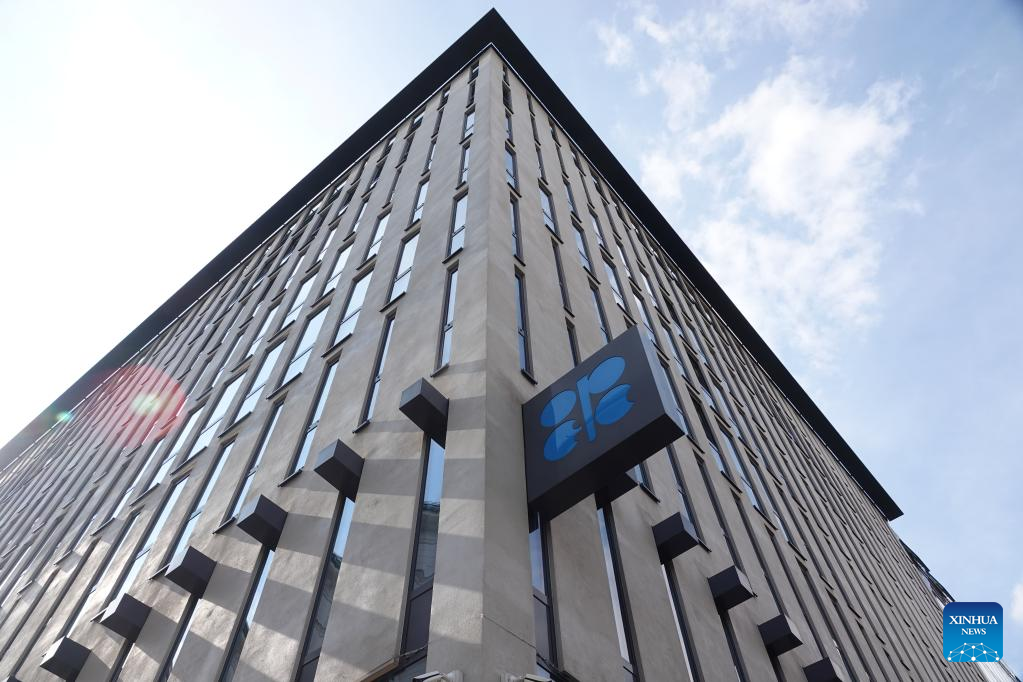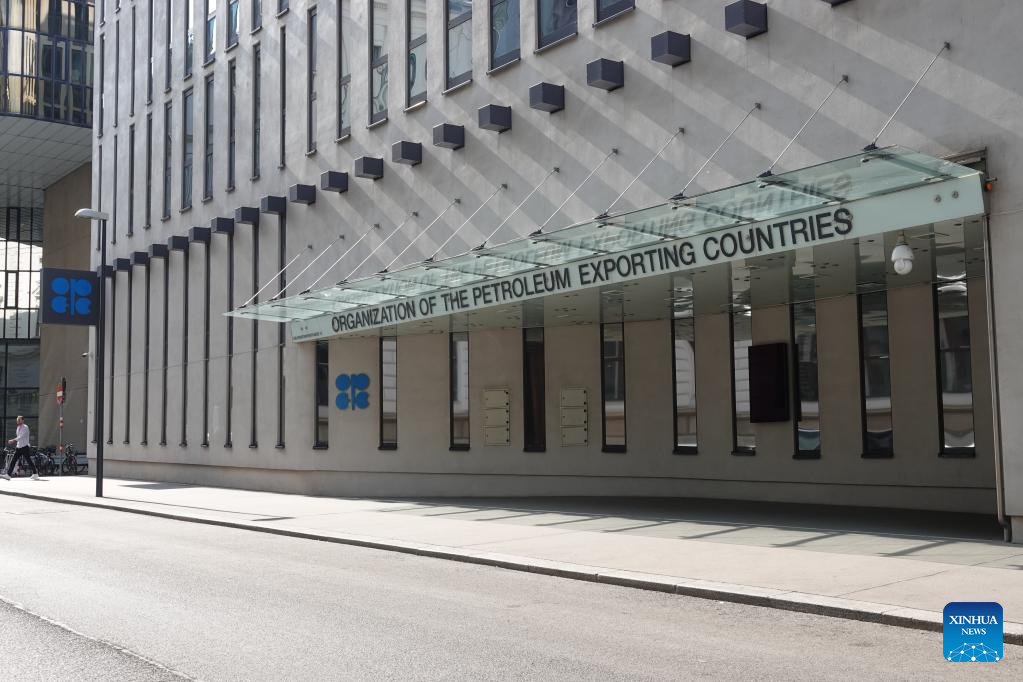
Photo taken on Sept. 5, 2022 shows the headquarters of the Organization of the Petroleum Exporting Countries (OPEC) in Vienna, Austria. OPEC and its allies, a group known as OPEC+, on Monday announced a small production cut for October to bolster oil prices that have recently slid over recession fears. The oil alliance decided to cut production by 100,000 barrels per day (bpd) in October from its September level, according to an OPEC statement released after the 32nd OPEC and non-OPEC Ministerial Meeting. (Photo by Wang Zhou/Xinhua)
VIENNA, Sept. 5 (Xinhua) -- The Organization of the Petroleum Exporting Countries (OPEC) and its allies, a group known as OPEC+, on Monday announced a small production cut for October to bolster oil prices that have recently slid over recession fears.
The oil alliance decided to cut production by 100,000 barrels per day (bpd) in October from its September level, according to an OPEC statement released after the 32nd OPEC and non-OPEC Ministerial Meeting.
The move means OPEC+ will walk back on the output increase of 100,000 bpd in September and revert to the production level in August. It is also the alliance's first output cut in over a year since it started in August 2021 to gradually unwind record cuts made at the height of the COVID-19 pandemic.
Participants at the monthly OPEC+ ministerial meeting also requested the meeting's chairman to consider calling for the group's ministerial meeting "anytime to address market developments, if necessary," according to the statement.
The oil-producer group's decision on Monday came as oil prices have tumbled in recent weeks over fears of an economic slowdown and demand contraction. Both the West Texas Intermediate (WTI) and the Brent crude have dropped from peaks of over 120 U.S. dollars a barrel in June to about 90 U.S. dollars a barrel.
Last month, OPEC's de facto leader Saudi Arabia signaled that OPEC+ might cut production to balance the market.
Saudi Energy Minister Abdulaziz bin Salman Al Saud said in late August that the alliance was ready to slash output amid volatility in the oil futures market, driven by thin liquidity and a disconnect with market fundamentals.
According to OPEC's latest monthly report, some of its members have been struggling to meet their monthly output quotas, pointing to a still tight physical market. In July, Nigeria and Angola fell significantly behind their production targets. ■

Photo taken on Sept. 5, 2022 shows the headquarters of the Organization of the Petroleum Exporting Countries (OPEC) in Vienna, Austria. OPEC and its allies, a group known as OPEC+, on Monday announced a small production cut for October to bolster oil prices that have recently slid over recession fears. The oil alliance decided to cut production by 100,000 barrels per day (bpd) in October from its September level, according to an OPEC statement released after the 32nd OPEC and non-OPEC Ministerial Meeting. (Photo by Wang Zhou/Xinhua)

Photo taken on Sept. 5, 2022 shows the headquarters of the Organization of the Petroleum Exporting Countries (OPEC) in Vienna, Austria. OPEC and its allies, a group known as OPEC+, on Monday announced a small production cut for October to bolster oil prices that have recently slid over recession fears. The oil alliance decided to cut production by 100,000 barrels per day (bpd) in October from its September level, according to an OPEC statement released after the 32nd OPEC and non-OPEC Ministerial Meeting. (Photo by Wang Zhou/Xinhua)



